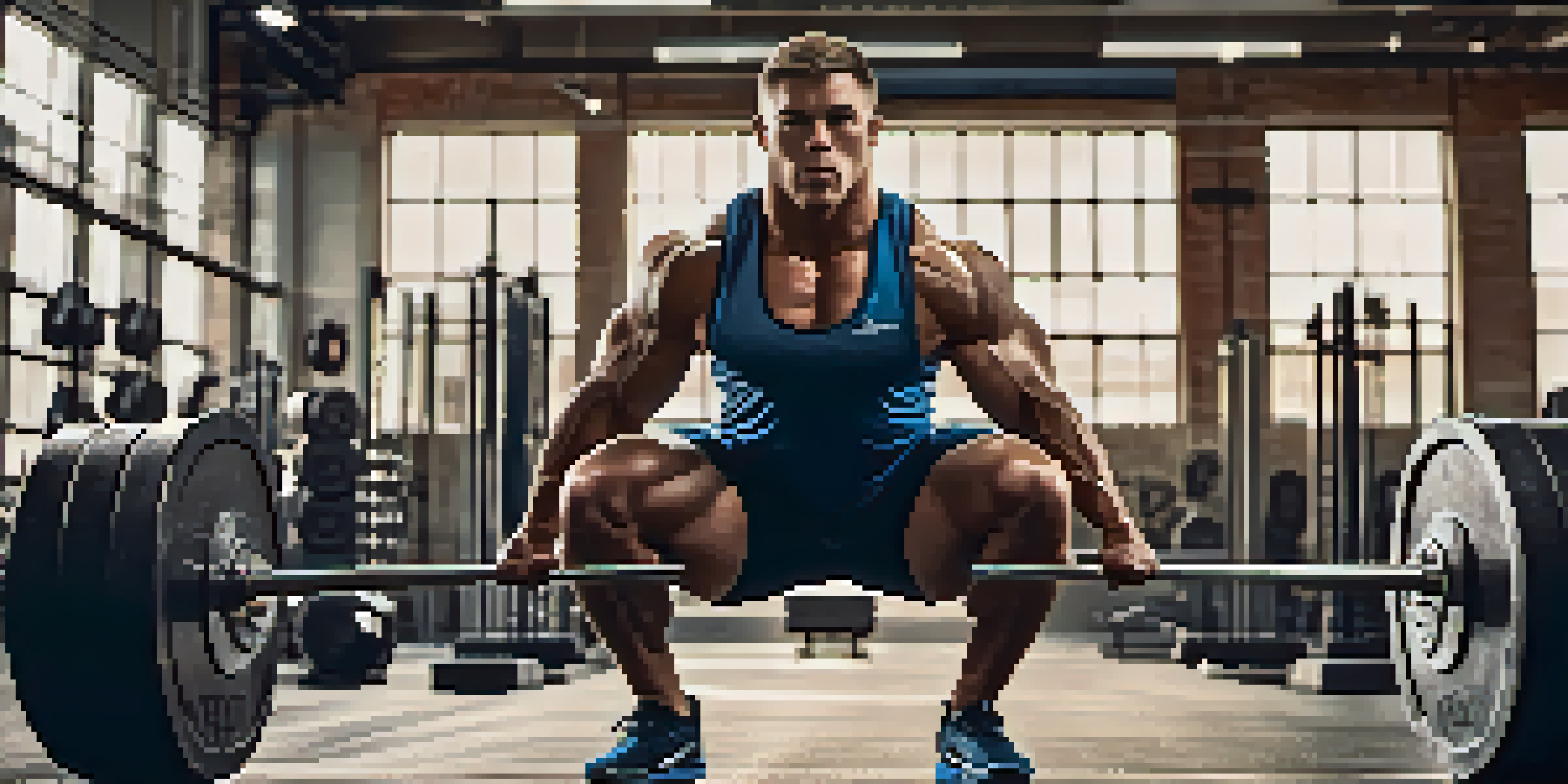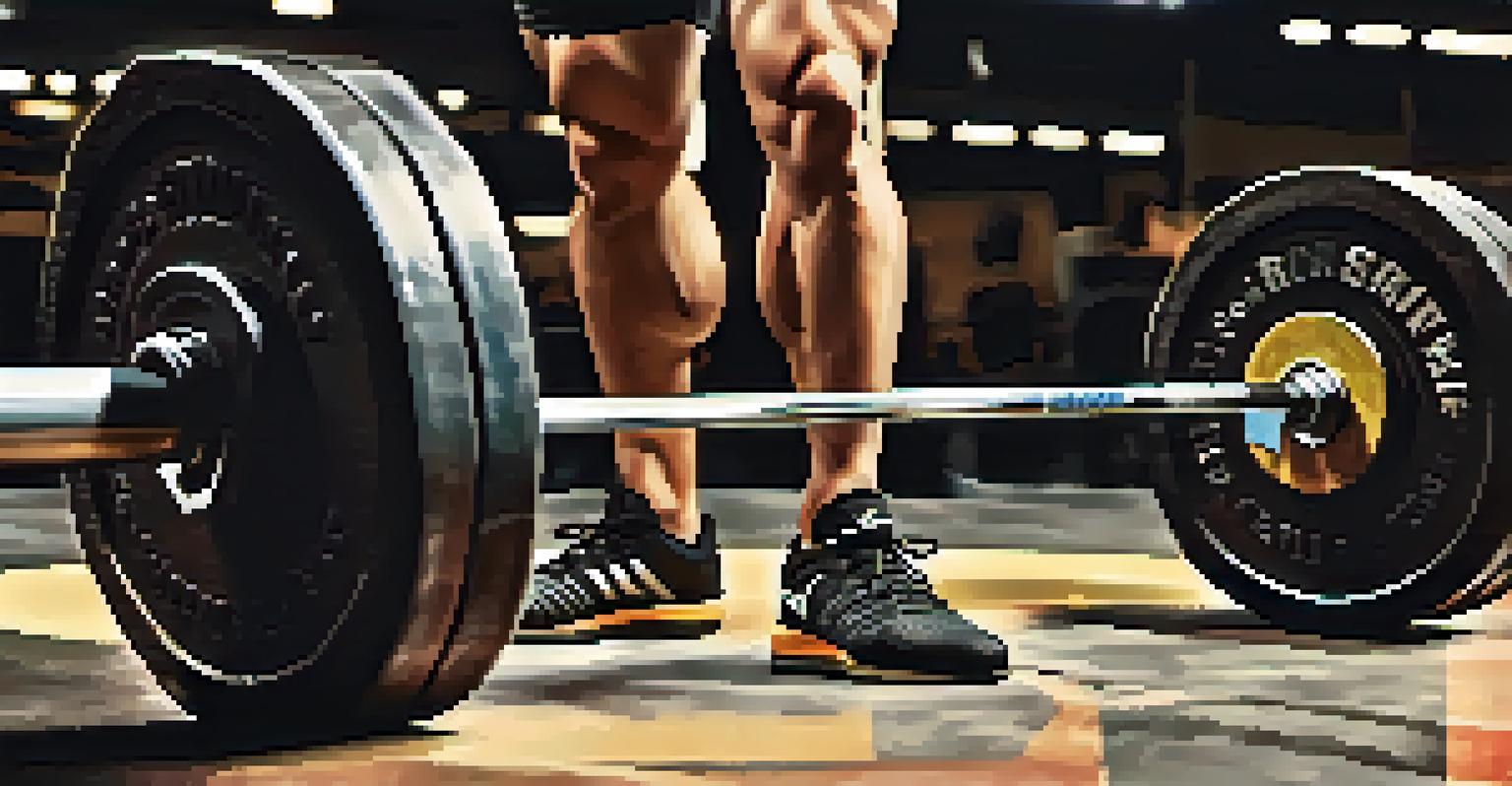The Science Behind Mobility and Powerlifting Performance

Understanding Mobility: What Is It Really?
Mobility refers to the ability of a joint to move freely through its full range of motion. Unlike flexibility, which focuses on muscle length, mobility encompasses both the joint and surrounding tissues. This distinction is crucial for athletes, especially powerlifters, as it directly influences lifting mechanics and overall performance.
Mobility is the key to a successful lifting regimen; without it, strength alone cannot carry you through.
When we think about lifting heavy weights, it's easy to focus solely on strength. However, without adequate mobility, even the strongest lifter may struggle to execute lifts correctly. Imagine trying to do a deep squat with tight hips; it’s not just challenging but can also lead to injury. Thus, mobility serves as a foundation for effective lifting.
For powerlifters, ensuring optimal mobility can elevate performance levels. It allows for better positioning during lifts, which can enhance force production and reduce the risk of injury. In essence, mobility isn't just a side consideration; it's a vital component of a successful powerlifting regimen.
The Connection Between Mobility and Lifting Technique
Good technique is the cornerstone of successful powerlifting, and mobility plays a significant role in achieving that. When joints and muscles are mobile, athletes can maintain proper form throughout their lifts. This means being able to squat deep, maintain a strong arch in the back, and keep the bar path efficient.

Consider the deadlift: if your hips are tight, you'll likely find yourself rounding your back, which is a recipe for injury. Conversely, with adequate mobility, you can hinge at the hips and maintain a neutral spine, allowing for a safer and more powerful lift. This example illustrates how mobility directly influences lifting technique.
Mobility Enhances Lifting Performance
Optimal mobility allows powerlifters to execute lifts with better technique, leading to improved performance.
Improving your mobility can lead to immediate benefits in your lifting technique. As you work on your range of motion and flexibility, you'll notice that your lifts become more fluid and controlled. This not only enhances your performance but also builds your confidence under the bar.
How Mobility Affects Injury Prevention in Powerlifting
Injury prevention is a top concern for powerlifters, and mobility plays a key role in minimizing risks. When your joints and muscles are properly mobilized, they can absorb stress more effectively during heavy lifts. This reduces the likelihood of strains, tears, and other injuries that can sideline an athlete.
The only way to achieve greatness is through consistency and a commitment to improving your mobility.
Think of your body like a well-oiled machine; when all parts move smoothly, the risk of breakdown decreases. Tightness or immobility in one area can lead to compensatory patterns elsewhere, which may cause overuse injuries. By maintaining good mobility, you're essentially ensuring that your machine runs efficiently.
Incorporating mobility work into your training routine can be a game-changer for injury prevention. Simple stretches, foam rolling, and dynamic movements can improve your range of motion, allowing for safer lifts. Prioritizing mobility not only protects your body but also contributes to long-term lifting success.
Key Mobility Exercises for Powerlifters
To enhance mobility, powerlifters should focus on specific exercises that target key areas. For example, hip openers like the pigeon pose can significantly improve squat depth. Similarly, thoracic spine mobility exercises, such as the cat-cow stretch, can improve overhead lifts by allowing for better shoulder positioning.
Another effective mobility drill is the ankle dorsiflexion stretch, which helps lifters maintain proper form during squats. Without adequate ankle mobility, lifters often compensate by leaning forward, which can lead to poor mechanics. By dedicating time to these exercises, athletes can optimize their lifting performance.
Prevention of Injuries with Mobility
Maintaining good mobility helps absorb stress during lifts, significantly reducing the risk of injuries.
Ultimately, the goal is to integrate these mobility exercises into your routine consistently. A few minutes each training session can yield significant improvements over time. Think of it as a warm-up for your body, setting the stage for better lifting performance.
The Role of Dynamic Warm-Ups in Mobility
Dynamic warm-ups are crucial for preparing the body for intense lifting sessions, and they also play a significant role in enhancing mobility. Unlike static stretching, which can temporarily weaken muscles, dynamic movements warm up the body while improving range of motion. This is essential for powerlifters aiming to maximize their performance.
Incorporating movements like leg swings, lunges, and arm circles into your warm-up routine can activate your muscles and joints. These exercises increase blood flow and prepare your body for the demands of lifting. Think of dynamic warm-ups as a way to 'wake up' your body, making it more responsive during your workout.
By prioritizing dynamic warm-ups, powerlifters can experience immediate benefits in their training sessions. You'll not only feel more mobile but also more powerful under the bar. This simple addition to your routine can make a noticeable difference in your overall performance.
The Importance of Recovery and Mobility
Recovery is a critical aspect of any training program, and mobility work plays an essential role in this phase as well. After intense lifting sessions, your muscles and joints can become tight and sore. Implementing mobility exercises during recovery helps alleviate discomfort and restore range of motion.
Foam rolling and stretching can be particularly beneficial post-workout. They help loosen tight muscles and improve blood circulation, facilitating faster recovery. Imagine giving your body a gentle massage; it not only feels good but also aids in the healing process.
Consistency is Key for Mobility Training
Integrating mobility exercises into your routine consistently can greatly enhance your overall lifting success.
Incorporating mobility-focused recovery sessions can enhance your overall training outcomes. By prioritizing recovery, you’re setting yourself up for success in the next training cycle. This holistic approach ensures that your body stays resilient and ready for the challenges ahead.
Integrating Mobility Training into Your Powerlifting Routine
Integrating mobility training into your powerlifting routine doesn't have to be complicated. Start by setting aside time for mobility work in your warm-up and cool-down phases. This ensures that you're not only preparing your body for lifting but also helping it recover afterward.
You can also incorporate short mobility sessions on rest days. These can be simple, focused workouts that target specific areas needing improvement. Think of them as a way to supplement your lifting, reinforcing your body's ability to move freely and efficiently.

Ultimately, the key is consistency. By making mobility training a regular part of your routine, you'll reap the benefits in your lifts and overall performance. It's about creating a balanced approach that supports your powerlifting journey, making you a stronger, healthier athlete.